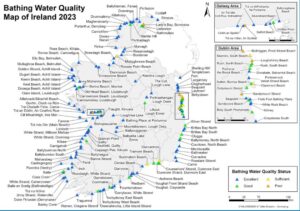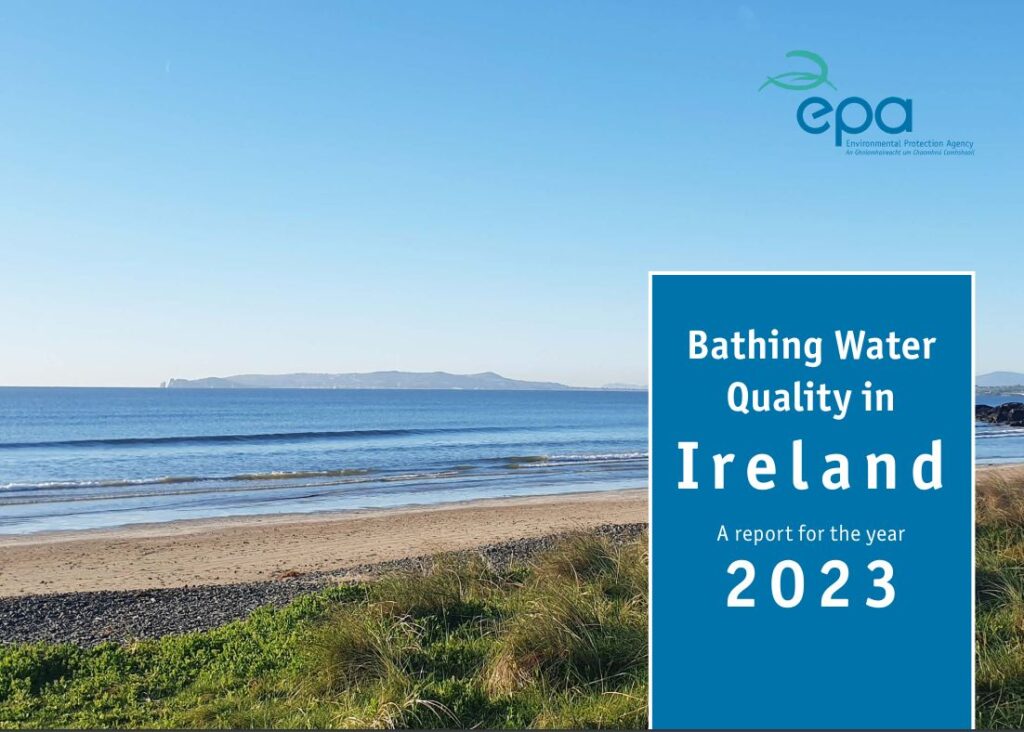The Environmental Protection Agency (EPA) has today published the Bathing Water Quality in Ireland report for 2023 which shows that water quality at the majority of Ireland’s bathing waters was of a high standard. 77 per cent of bathing sites have ‘Excellent’ water quality while 97 per cent meet the minimum standard.
The report found 6 Wexford had excellent water quality, with the majority meeting or exceeding the minimum standard. These beaches included Courtown North Beach, Morriscastle. Ballinesker, Curracloe, Rosslare Strand and Carne.
Ballymoney North beach recieved good bathing water quality status while poorest performing beach in the county was Duncannon which received a sufficient status.

Bathing water quality can be impacted by heavy rainfall. This results in waste water overflows and in runoff from agricultural lands and urban areas which can cause short-term deterioration in water quality. In 2023 urban waste water related incidents were the most frequently reported cause of beach closures. Run-off from agriculture, fouling from dogs left on the beach, wastewater from properties going to surface water drains rather than sewer (known as misconnections) and algal blooms also impacted on bathing waters.
Record rainfall levels in July and storms in August led to more beach closures in 2023 than in previous years. The rainfall events in 2023 highlighted the need to build climate resilience into the effective management of bathing waters.
Commenting on the report, Dr Eimear Cotter, Director of the EPA, Office of Evidence and Assessment, said:
“While our bathing water quality is generally very good overall, there is a need to build climate resilience into the management of bathing waters to reduce the risk of pollution following heavy rainfall. This needs action by all sectors including Uisce Éireann, local authorities, and agriculture to reduce overflows from urban waste water systems, and runoff from urban areas and agricultural land. While beach closures play an important role in protecting bathers’ health, local authorities need to improve their understanding of the pressures which can impact beaches in the context of changing rainfall patterns.”
The number of beaches classified as poor increased from three to five in 2023. These are Balbriggan Front Strand Beach, Lady’s Bay (Buncrana), Trá na mBan (An Spidéal), which were also poor in 2022, and Loughshinny and Sandymount beaches in Dublin. The relevant local authorities and Uisce Éireann have plans in place to improve water quality at these beaches. These must be fully implemented to make these beaches safe for swimming.
No new bathing water sites were identified in 2023, although monitoring continues at almost 80 beaches not formally identified. The EPA encourages swimmers to engage with local authorities to officially identify and manage additional bathing sites to protect bathers’ health.
Further information on bathing water quality and updates on monitoring results during the bathing water season (1st June to 15th September) is available at www.beaches.ie.
Swimmers should always check www.beaches.ie and the signage at the beach for the latest water quality information for their local bathing site.

